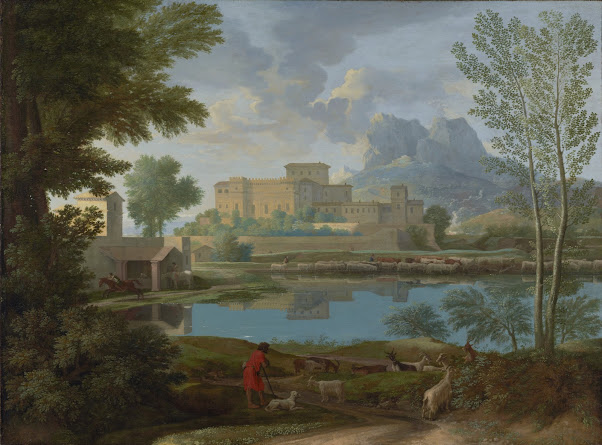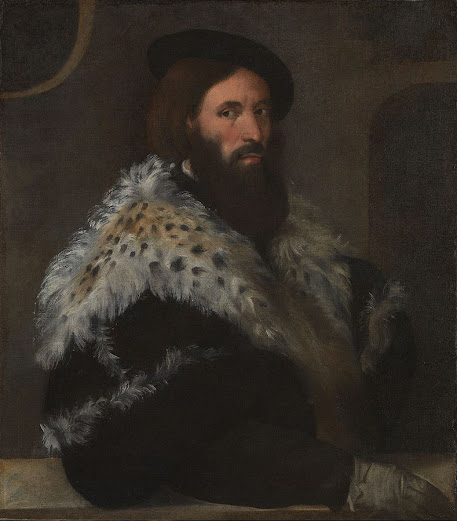Postmodern "Struggle of Approach" Exhibit
Postmodernism, as a style, turns away from abstraction in imagery. However, this is juxtaposed with an all-encompassing search for the next new medium or approach. In this exhibit, I will show some of the new and creative ways that the art world has expanded its own horizons.
First in our list we have Callen Schaub, an artist based out of Montreal that became famous on social media for his unique approach to the canvas- physics. While he is a competent painter in his own right, Callen prefers to use complex systems such as partitioned buckets with holes in the bottom set to spin over a canvas (he has nicknamed his bucket creation "the chalice of chaos"). This creates a mesmerizing helix effect, and is only one of his methods for getting paint to canvas.
(Effusion by Callen Schaub, 2 April 2020, Montreal, Canada)While this is still an abstract style, the true abstraction is in the methodology applied. We can see bright colors, twirling lines, and a kinetic splattering effect unique to this sort of physical application. You can see how he makes the piece here.
(Burgeon by Callen Schaub, 1 June 2021, Montreal, Canada)
Again, the real artistry is in the attitude and the method. You can watch Callen create this piece on his YouTube channel https://www.youtube.com/watch?app=desktop&v=LJ2NV3uw3hY. Again we see emphasis on swathes of color with spatters and other effects just breaking up the linearity. One reason I enjoy Callen's works while I don't care for historical abstraction is the brightness of the colors and the intended message. Historical abstraction was born out of an need to express emotions towards the great war, whereas postmodern abstraction has a definitively more positive vibe to it.
(Gris Cover Art by Conrad Roset, 2018, Barcelona, Spain)Gris is a game initially released in 2018 that has an artistic element unique among many games. Conrad Roset is responsible for the main art direction of the indie game, and throughout the gameplay there is a strong use of thematic color framed as a journey through grief and depression. In my play through of the game, I could feel the story of the main character Gris as she travels through a series of pastel landscape, including puzzles and powerful scripted scenes and music. The game won the 2019 National Academy of Video Game Trade Reviewers Awards prize for contemporary art direction.
Gris is a more recent addition to the newly adopted canvas that is the video game world. Video games have been going strong since their popularity rose in the 1980s, and are a strong new multi-media approach to art. Worlds of books, movies, and many original titles are brought to life in the quintessential interactive format. As far as new approaches go, this is one of the most widely recognized and enjoyed.
In portraying the grief of the main character, the game uses color, music, and mechanics in tandem with one another. At the start of the game, which is a platformer, the protagonist cannot even jump, and moves very slowly with hunched shoulders. Throughout the game, the protagonist confronts oily black beasts of their fears, and gains abilities of corresponding color to each level. The protagonist's dress also changes as the game progresses, signifying the process of recovery. You can look at the launch trailer for the game here.
(Ice cave in Blue level of Gris by Conrad Roset, 2018, Barcelona, Spain)Lastly I'll be looking at Banksy, a prominent graffiti artist who's tagged buildings and made pop-up murals all over the world. His works are largely stenciled since his early career, where he switched to stencil art because it allowed him to complete his work faster and with more detail. The images Banksy paints are usually anti-war, anti-capitalist, or anti-establishment, like the mural above, which is one of his most famous. It depicts a protestor about to throw a bouquet of flowers in place of a Molotov cocktail. Banksy's works are usually known to be photorealistic, and use primarily black and white. The sharp lines of stenciling are some of the most prominent features of his works, and the subjects and placements of the works are powerful.
(Children of War, Maidan by Banksy, 2022, Independence Square, Kyiv, Ukraine)
Banksy continues to be active, going in November of 2022 to Ukraine to tag buildings and create several murals in protest of the Russian invasion. One, which depicts President Putin being tossed in a Judo throw, became an official stamp in Ukraine. Banksy's work has captured the imagination of many, and his artworks are widely well-received, and usually even accepted by local governments due to his popularity.
As far as approach goes, Banksy as well as other street artists have one front-and-center obstacle to their work; graffiti is illegal. The illegitimacy and wide publication of street art careers is a juxtaposition of values that often manifests itself when artists, like Banksy, spend time in prison for their petty criminality. Despite this, Banksy and other street artists are beloved by communities across the world. Perhaps the secret ingredient really is crime.
References
Callen Schaub. Callen Schaub Art Inc. https://callenschaub.com. Accessed 18 April 2024
Erik Kain. "'Gris' Review: More Than Just A Pretty Coat Of Paint." Forbes Game Reviews, https://www.forbes.com/sites/games/2019/01/03/gris-review-more-than-just-a-pretty-coat-of-paint/?sh=25dfc41d1564. Forbes Magazine, 3 January 2019, Accessed 18 April 2024
Erin Kalejs. "Collen Schaub: The Authentically Fake Artist." The Curve Magazine, https://thecurvemagazine.com/2021/08/01/callen-schaub-the-authentically-fake-artist/. Accessed 18 April 2024








Comments
Post a Comment